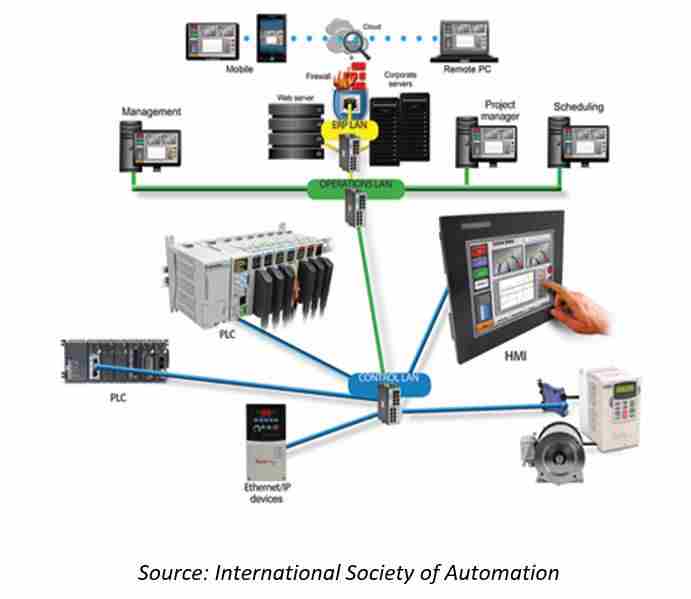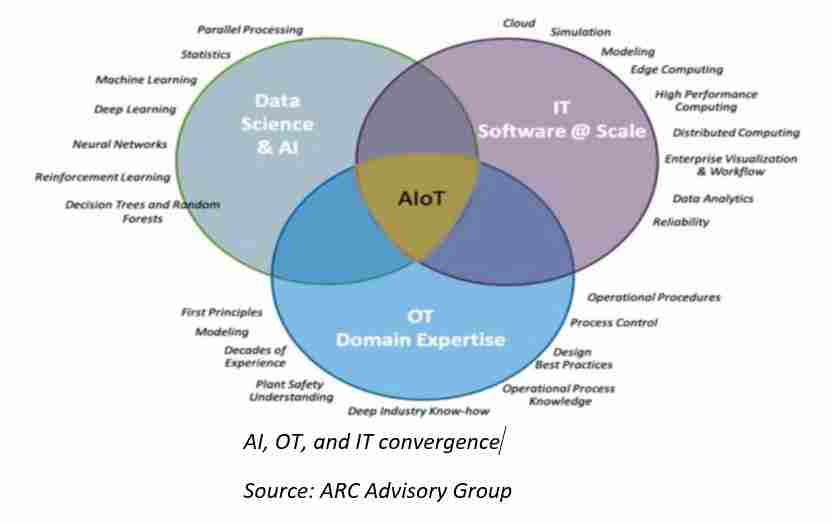

Software and custom application solutions that offer a graphical user interface (GUI) to assist in operating or monitoring industrial automation devices and equipment are referred to as human-machine interface (HMI) solutions.
The user interface (UI) of HMI software often consists of a dashboard for controlling and interacting with a machine, a collection of machines, or a system. The dashboard has controls for input and output as well as live data visualization on a GUI such as an operator panel.

HMIs and networks provide local and remote connections to a variety of controllers, smart instruments, and other smart devices like motor drives. Data collected using these connections can then be distributed to mobile devices and remote PCs.
HMI software is segmented primarily into three types:
These segments reflect how HMI software and services suppliers are expanding their application space and represent important growth areas.
Internet-driven technologies have transformed the way society consumes information for more than a generation. PCs, tablets, and smartphones have led to a huge consolidation in the media while democratizing the dissemination of information. At current growth rates, the amount of data created worldwide doubles every 3 to 4 years, and information is being generated at rates much faster than it can be consumed. It is easy to draw parallels to the domain of manufacturing; smart devices embedded close to the process, including edge devices, gather much more information than in the past, but factory automation has reduced the number of operators needed per machine. The challenge is to pre-sort and contextualize information to get only the right information to the right operator at the right time.
Manufacturing industries are not used to handling the large amounts of data being generated and collected today, as manufacturing IT systems are often based on legacy systems and architectures. Finding one’s way through the jungle of data to display the right information at the right time is a daunting task. Data democratization is the process of making data accessible to the average non-IT user, without having to involve the IT department. Today, industrial companies are borrowing IT approaches and architectures developed for enterprise systems with a focus on speed and scale. This next generation of solutions employs AI to assist users in accessing the data they seek to solve problems without retraining or adding data science requirements to industrial organizations.

HMI solutions will benefit greatly from these AI-supported systems that help machine operators find the right data that assists and guides them through normal process operations as well as abnormal situations.
HMI software solutions have evolved over the last few decades and its demand is growing in many industries. Food & beverage, water & wastewater, automotive, and oil & gas are some of the leading industries that use HMI software widely. As such, industrial operations are investing in automation at an accelerating pace to stay competitive. To this end, industries are embracing digitalization with strong investments worldwide for conforming digital solutions with the use of technologies, such as Industrial IoT, analytics, and AI. HMI software and services will play a critical role in the digitalization of the process and discrete industries.
In addition to a robust market for visualization, reporting, and monitoring industrial operations using HMI software solutions, HMI software solutions and services are growing in the market due to the availability of more data, technologies such as Industrial IoT and the edge, as well as requirements to enable a remote, connected workforce. These factors present exciting opportunities for HMI software and services suppliers. In addition to pure visualization, such data may also be used efficiently with auxiliary processes like workflow, manufacturing execution systems (MES), intelligence, enterprise asset management (EAM), and optimization. The pandemic has significantly accelerated the need for HMI software, and providers are continuously working to accommodate this demand. For further details, please check this link: Human-Machine Interface (HMI) Software & Services

